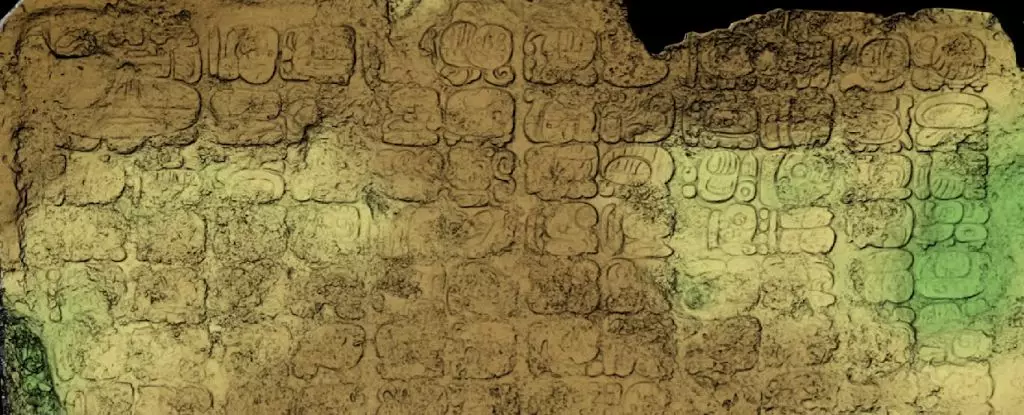In the depths of the Mexican jungle, nestled within the ancient Maya city of Cobá, researchers have stumbled upon a remarkable discovery that sheds light on the rich history of the region. A stone slab, adorned with 123 meticulously carved glyphs, was unearthed near the Nohoch Mul pyramid. The inscription on the slab reveals the founding date of a town called Keh Witz Nal, as well as the name of a previously unknown Maya ruler, K’awiil Ch’ak Chéen, invoking the god of lightning.
Located in modern-day Quintana Roo, Cobá was once a bustling metropolis with an estimated population of 50,000 inhabitants. The city flourished for over 1,500 years, from its possible construction in 50 BCE to its eventual decline between 1200 and 1500 CE. Cobá, meaning “rough waters” in Maya, was a vibrant cultural center filled with intricate engravings and sculptures that provide a glimpse into the spiritual and aesthetic beliefs of its ancient inhabitants.
Prior to the recent discovery, archaeologists had identified 14 rulers of Cobá, including three female monarchs. Many of these rulers adopted the name of the god K’awiil, as revealed by the newly deciphered glyphs. The inscription also pays homage to the gods believed to have founded Cobá, such as Bolón Tz’akab Ajaw, the lord of countless generations. The intricate script on the stone slab has opened up a new chapter in the study of Maya civilization.
The meticulous excavations at Cobá, overseen by Mexico’s National Institute of Anthropology and History (INAH), have been instrumental in uncovering and restoring the city’s lost monuments. The stone slab, found at the bottom of a sacred pool, covers an impressive 11 square meters and features a unique L-shaped arrangement of glyphs. To prevent further damage from water and erosion, a high-resolution 3D reconstruction of the slab has been created, allowing for detailed analysis without disturbing the delicate artifact.
While the initial findings from the stone slab have provided valuable insights into the history of Cobá, researchers are eager to conduct a more thorough analysis of the inscription. The discovery of K’awiil Ch’ak Chéen and the founding date of Keh Witz Nal have sparked renewed interest in the ancient city and its rulers. As further excavations and research unfold, the hidden mysteries of Cobá are expected to reveal even more secrets about the illustrious Maya civilization.



Leave a Reply